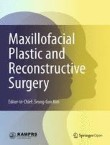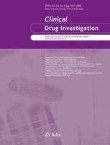|
Medicine by Alexandros G. Sfakianakis,Anapafseos 5 Agios Nikolaos 72100 Crete Greece,00302841026182,00306932607174,alsfakia@gmail.com,
Αρχειοθήκη ιστολογίου
-
►
2023
(272)
- ► Φεβρουαρίου (141)
- ► Ιανουαρίου (131)
-
►
2022
(2066)
- ► Δεκεμβρίου (80)
- ► Σεπτεμβρίου (170)
- ► Φεβρουαρίου (190)
- ► Ιανουαρίου (203)
-
►
2021
(7399)
- ► Δεκεμβρίου (186)
- ► Σεπτεμβρίου (472)
- ► Φεβρουαρίου (851)
-
▼
2020
(2517)
-
▼
Δεκεμβρίου
(792)
-
▼
Δεκ 20
(50)
- A role for primary cilia in coral calcification?
- Extracranial dose and the risk of radiation-induce...
- Impact of bridging thrombolysis on clinical outcom...
- Feasibility and possible value of quantitative sem...
- Adsorption of Methyl Blue onto Activated Carbon De...
- Effectiveness of low-level laser therapy on recove...
- An update on the pathogenesis of Hashimoto’s thyro...
- The Roles of Insulin-Like Growth Factor Binding Pr...
- Efficacy of Tofacitinib in the Treatment of Psoria...
- Time to Treatment Discontinuation in German Patien...
- First-in-Man Safety, Tolerability, and Pharmacokin...
- Updated Overall Survival in a Randomized Study Com...
- A virtual reality-based data analysis for optimizi...
- A new platform for laparoscopic training: initial ...
- Outcomes of endoscopic treatment for malignant bil...
- Does three-dimensional surgery affect recurrence p...
- Comparison of peroral endoscopic myotomy between d...
- Totally laparoscopic anatomic S7 segmentectomy usi...
- Development and validation of machine learning mod...
- Transpancreatic biliary sphincterotomy for biliary...
- An advanced RFID-based system to localize gastric ...
- Salivary Glands and Periodontal Changes in a Popul...
- Minimally invasive procedure for removal of infect...
- Risk for developing perianal abscess in type 1 and...
- Επείγουσα ειδοποίηση πληροφοριών του ΠΟΥ για χρήστ...
- Calcium signaling: breast cancer’s approach to man...
- What Are the Preferences of Patients With Rheumato...
- Development of a Patient-Reported Outcome Measure ...
- Clinical and Economic Burden of Pediatric Mild-to-...
- Two-Year US Pharmacovigilance Report on Brodalumab
- Identification of characteristics, risk factors, a...
- Effects of Heat and Chemical Pretreatments of Bana...
- Clinical and radiological outcome after anterior c...
- Surgical site infections after distal radius fract...
- The faster the better? Time to first CT scan after...
- Influence of Biochar Particle Size and Concentrati...
- Critical Ischemia
- How to Assess a Patient for HSCT
- The Ncoa7 locus regulates V-ATPase formation and f...
- Autophagy and the endolysosomal system in presynap...
- Anatomical basis of erector spinae plane block: a ...
- Topical Probiotics in Dermatological Therapy and S...
- Surgical management of symptomatic cavum septum pe...
- Possible tics diagnosed as stereotypies in patient...
- Role and function of Chondrostereum purpureum in b...
- Temporal effects of barbiturate coma on intracrani...
- Naltrexone’s Impact on Cancer Progression and Mort...
- Pharmacokinetics and Bioequivalence of Cefprozil f...
- Targeted Use of Prednisolone with Intravenous Immu...
- Walking the line: mechanisms underlying directiona...
-
▼
Δεκ 20
(50)
- ► Σεπτεμβρίου (21)
- ► Φεβρουαρίου (28)
-
▼
Δεκεμβρίου
(792)
-
►
2019
(12076)
- ► Δεκεμβρίου (19)
- ► Σεπτεμβρίου (54)
- ► Φεβρουαρίου (4765)
- ► Ιανουαρίου (5155)
-
►
2018
(3144)
- ► Δεκεμβρίου (3144)
Ετικέτες
Πληροφορίες
Κυριακή 20 Δεκεμβρίου 2020
A role for primary cilia in coral calcification?
Extracranial dose and the risk of radiation-induced malignancy after intracranial stereotactic radiosurgery: is it time to establish a therapeutic reference level?
|
Impact of bridging thrombolysis on clinical outcome in stroke patients undergoing endovascular thrombectomy: a retrospective analysis of a regional stroke registry
|
Feasibility and possible value of quantitative semi-automated diffusion weighted imaging volumetry of neuroblastic tumors
|
Adsorption of Methyl Blue onto Activated Carbon Derived from Red Oak ( Quercus rubra ) Acorns: a 2 6 Factorial Design and Analysis
|
Effectiveness of low-level laser therapy on recovery from neurosensory disturbance after sagittal split ramus osteotomy: a systematic review and meta-analysis
|
An update on the pathogenesis of Hashimoto’s thyroiditis
|
The Roles of Insulin-Like Growth Factor Binding Protein Family in Development and Diseases
|
Efficacy of Tofacitinib in the Treatment of Psoriatic Arthritis: A Systematic Review
|
Time to Treatment Discontinuation in German Patients with Schizophrenia: Long-Acting Injectables versus Oral Antipsychotics
|
First-in-Man Safety, Tolerability, and Pharmacokinetics of a Novel and Highly Selective Inhibitor of Matrix Metalloproteinase-12, FP-025: Results from Two Randomized Studies in Healthy Subjects
|
Αναζήτηση αυτού του ιστολογίου
! # Ola via Alexandros G.Sfakianakis on Inoreader
-
Does CBD Oil Lower Blood Pressure? This article was originally published at SundayScaries." Madeline Taylor POSTED ON January 13, 20...
-
Abstract Purpose Clinicians must balance the risks from hypotension with the potential adverse effects of vasopressors. Experts have rec...







